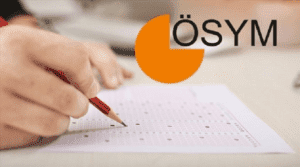 Loading…
Loading…
Teaching Language Construction
Approaches
From Grammar-translation method to
The Communicative Approach
Presenting language through topics and
meaningful contexts
Providing activities which offer both
controlled practice and creative language use
Three dimensions to grammar instruction:
form, meaning and function/use
(Larsen-Freeman, 1995).
Focus on Forms
Focus on meaning
Focus on form
Focus on Forms:
“Parts of the language are taught separately and
step by step so that the acquisition is a process of
gradual accumulation of parts until the whole
structure of language has been built up…At any
one time the learner is being exposed to a
deliberate limited sample of language”
(Wilkins, 1976, p. 2).
Focus on the structure and use of
language forms
The morphology of forms
The syntax of phrases, clauses and sentences
Vocabulary (the meaning of words and their lexical grammar)
The meanings and functions that phrases and sentences can
convey
Pronunciation
Spelling
Focus on Meaning:
“language is organized in terms of the purpose for
which people are learning language and the kinds
of language performance that are necessary to
meet those purposes” (Wilkins, 1976, p. 13).
Focus on Form:
“Overtly draws students’ attention to linguistic
elements as they arise incidentally in lessons whose
overriding focus is on meaning or
communication” (Long, 1991, pp. 45-46).
“The learner’s attention is drawn precisely to a
linguistic feature as necessitated by a
communicative demand” (Doughty & Williams,
1999, p. 3).
Approaches
Deductive– teaching through rules (the rule is
provided followed by the provision of examples in
which the rule is applied).
Inductive– teaching through examples (students
are provided with several examples from which a
rule is inferred).
Explain and Practice: deductive
approach
Students are given explanations or grammar
rules and then based on these explanations
or rule, they make phrases and sentences
using the new language.
Explain and practice sequences are
usually PPP-like or ‘Straight arrows’
PPP Model
Presentation:
The teacher introduces a situation which contextualises the
language to be taught.
Practice:
The students now practice the langauge using accurate
reproduction techniques such as choral repetition, individual
repetition and cue-response drills.
Production:
Later the students using the new language, make sentences of
their own, and this is referred to as production.
Engage—Study–Activate
(ESA)
Engage: Engage students emotionally with what is going on.
Study: the focus is on how something is constructed
Activate: students are encouraged to use all and/or any of the
language they know.
Straight arrows:
The teacher engages students by presenting a picture or a situation.
At the study stage, the meaning and form of the language are
explained.
The teacher then models the language and the students repeat and
practice it.
Finally they activate the new language by using it in sentences of their
own.
Sources of inductive instruction:
Realia / Actions
Worksheets (can often be structured to
inductively lead students to a grammar rule)
Authentic texts (after listening to a dialogue or
reading a text, students can answer questions
to highlight certain grammatical structures–
these may then be used to derive rules)
Dialogues
Recorded Conversations
Discover [and practice]
Inductive approach
(See examples of language and try to work
out how it is put together)
Reading a text and then finding examples of
different past tenses and saying how they
and why they are used.
Research [and practice]
Have students do language reearch on their
own.
E.g. Working on how we use our bodies to
express meaning:
Give students a number of collocations, tell
them to use them in sentences, to talk about
what the actions mean.
Three useful strategies (Batstone,
1994):
Noticing new language input which involves focusing
the pupil’s attention on the language form, so they
notice and become aware of the structure and
meaning.
Structuring knowledge of the language system which
involves pupils in manipulating forms and meaning in
controled practice
Preceduralising, involving learners in fluent language
use and communication where they formulate their
own meanings in contexts over which they have
considerable control.
MMM stages and Plan-Do-Review model




